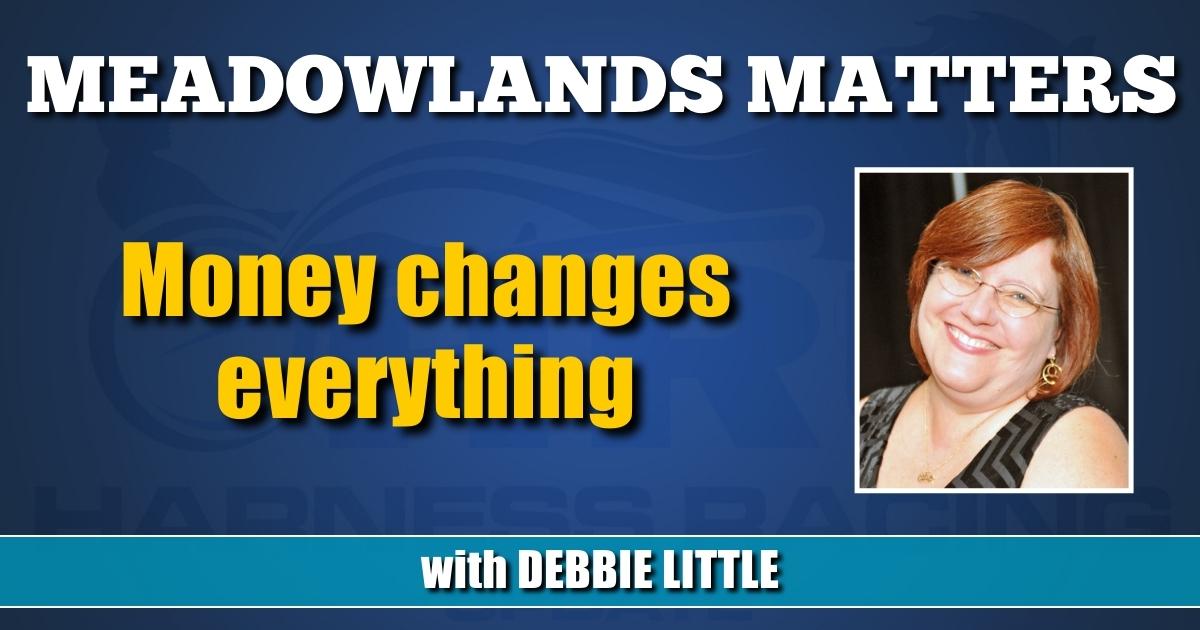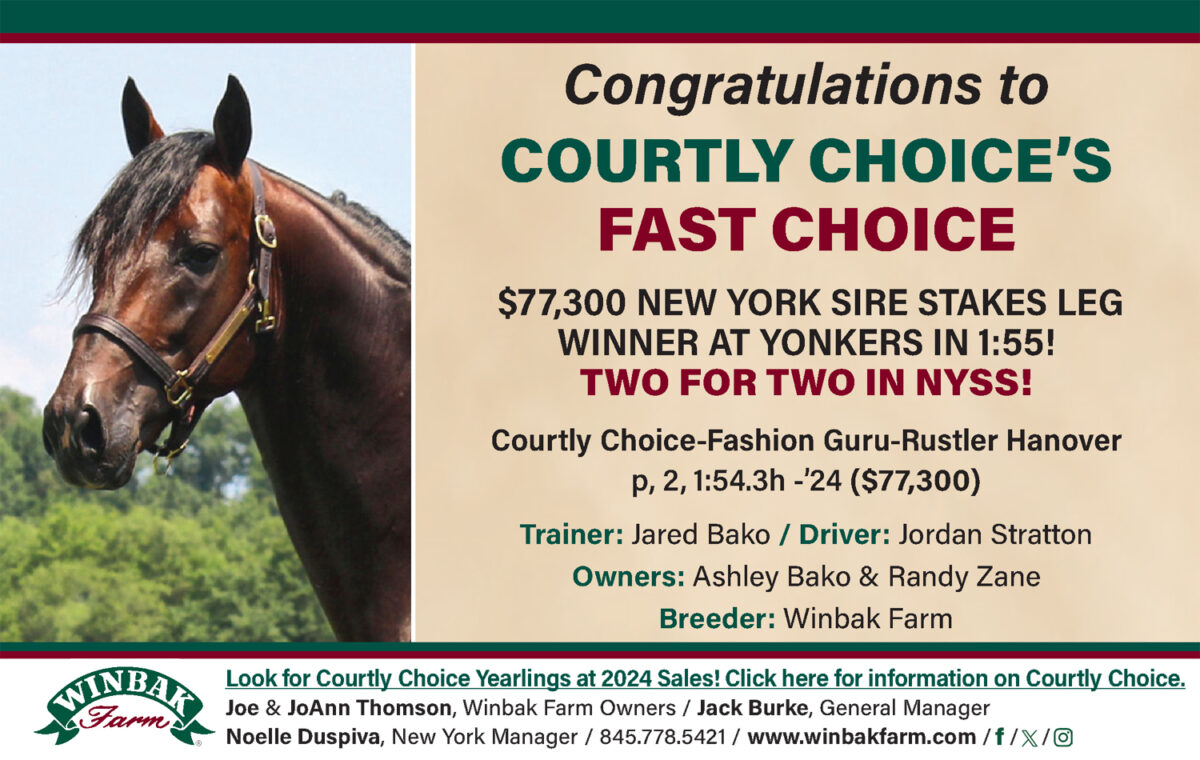

Money changes everything
To get larger fields in the FanDuel Mares Championships you’ve got to show them the money.
by Debbie Little
Having a 3-year-old in all four FanDuel Championships added a level of excitement to the races.
Twin B Joe Fresh won the Mares Pace while her trotting counterpart, Bond, finished second. As thrilling as those races might have been, the fact that they were just five-horse fields — four-horse fields without the 3-year-olds — took away some of the drama that a full field brings, not to mention they become less than palatable from a betting standpoint.
So, what needs to be done to attract more mares – or for that matter, fillies – to the FanDuel races?
One thought was to take a page from the TAB Eureka’s book and let the 3-year-old(s) draw for inside posts. Some participating trainers liked that idea, but thought the answer to the question is much simpler: show them the money.
“If a bonus was given to a 3-year-old I think that would be a much better incentive [than an inside post draw],” said trainer Linda Toscano.
Toscano has long been advocating for better purses for mares.
“I’ve talked to owners and I’ve talked to them in the boardrooms about if you have to make the sustaining payments [for mares] higher, make the sustaining payments higher, but give them more money,” Toscano said. “Look at what happened at the Jug this year. They haven’t had three divisions of the Jug in they can’t remember how long, nobody goes. Make it a million dollars and they have three divisions. You know, if you want to incentivize people, pay them.”
Toscano won the million-dollar Jug this year with It’s My Show and she also won the Jugette – which went for $255,000 – with Ucandoit Blue Chip.
“There’s a reason they call them the ‘glamour boys,’ Toscano said. “Back in the day, we didn’t have a lot of mares and they struggled very, very much to get enough mares to have a mares division. When I first started racing horses, we had to race them against the boys and they could compete and they did compete. Then the mares division took off and it was better. It was nice to have a mares division, but it’s not nice to go for as little as we do all the time.”
Trainer Nancy Takter won the Jugette in 2022 with Treacherous Dragon when the purse was only $205,000 and thinks the current disparity between the purses for the Jug and Jugette is terrible.
“I mean, at least make the purse a half-a-million for the fillies,” Takter said.
Takter sent out 3-year-old colt Tactical Approach to take on his elders in the FanDuel Open Trot, in which he finished second.
Even though Tactical Approach drew well in the seven-horse field, Takter wouldn’t mind having the 3-year-olds have the option to draw inside.
“They should draw 1 through 6, like how they do the bye,” Takter said. “Karl drew 1 through 6 in the Valley Victory because he had a bye to the final. So, I think that that would be fair. Although, actually, I think it should be 2 through 6 because nobody wants the rail. The rail sucks at The Meadowlands.”
Takter agrees with Toscano that female races in general don’t go for enough money and that the lower purses will discourage some from participating.
“It’s a long season as it is and if you don’t go for more money, it’s not worth it,” Takter said, “If you have a horse like Sylvia Hanover, she would have qualified to race in the [FanDuel] final. But, you know, she had a long year, it’s not a lot of money and they’re planning on bringing her back at 4, so, it’s not worth it for them to bring a filly like her back for that.
“Another thing you have to consider, too, is when I raced my 3-year-olds in the FanDuel final, we’re at home. I’m an hour from The Meadowlands. Whereas, other people, to use Sylvia as an example again, were they going to ship her all the way down from Canada again? So that makes it tougher.”
Chris Ryder co-owns and trains Twin B Joe Fresh and even though the idea of drawing an inside post would have benefitted his filly, he thinks that he’s already being benefitted just by being invited to race.
“We won the Glen Garnsey, which got us into the FanDuel, and then we had a $2,500 starting fee,” Ryder said. “But we already had an advantage because we didn’t make any payments to get in the race like all the other horses. So, we went into that race at less expense than the older horses. So, you’ve got an advantage there.
“So, then, if you also give them a preferential draw because they’re 3, it’s discouraging the older mares, because I’m trying to look at the big picture. So, horses that didn’t go were horses like Grace Hill, who was tired, the filly from Canada didn’t come down. I mean, $175,000 is okay but it wasn’t enough to bring Sylvia Hanover, was it?”
Ultimately everyone agreed that the best way to ensure bigger fields was to do what they did with the Jug and increase the purse, especially when it comes to mares.
“I’ve always said this, too, I think it’s a very archaic and outdated system that the mares go for less money in a lot of these stakes races,” Takter said. “And it’s a lot less money in most of them. I mean, even if you take the Hambletonian, the Hambletonian goes for a million and the fillies go for half-a-million, it costs you just as much to train a filly as it does a colt.”
Ryder added: “The bottom line is you’ve got to look after the mares because that’s the only place you get racehorses from. You can have stallions all day long, but if there’s no mares, there’s no foals.”















